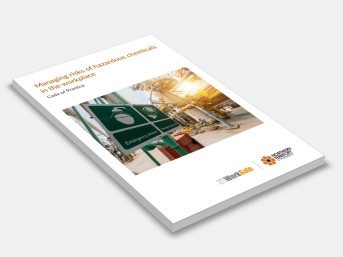Managing risks of hazardous chemicals in the workplace
NT WorkSafe
This Code of Practice on how to manage the risks associated with hazardous chemicals in the workplace is an approved code of practice under section 274 of the Work Health and Safety Act (the WHS Act).
An approved code of practice provides practical guidance on how to achieve the standards of work health and safety required under the WHS Act and the Work Health and Safety Regulation (the WHS Regulation) and effective ways to identify and manage risks.
A code of practice can assist anyone who has a duty of care in the circumstances described in the code of practice. Following an approved code of practice will assist the duty holder to achieve compliance with the health and safety duties in the WHS Act and WHS Regulation, in relation to the subject matter of the code of practice. Like regulations, codes of practice deal with particular issues and may not cover all relevant hazards or risks. The health and safety duties require duty holders to consider all risks associated with work, not only those for which regulations and codes of practice exist.
Codes of practice are admissible in court proceedings under the WHS Act and WHS Regulation. Courts may regard a code of practice as evidence of what is known about a hazard, risk, risk assessment or risk control and may rely on the code in determining what is reasonably practicable in the circumstances to which the code of practice relates. For further information see the Interpretive Guideline: The meaning of 'reasonably practicable'.
Compliance with the WHS Act and WHS Regulation may be achieved by following another method if it provides an equivalent or higher standard of work health and safety than the code.
An inspector may refer to an approved code of practice when issuing an improvement or prohibition notice.
Contents:
Section 1: Introduction
Section 2: Identifying Hazards
Section 3: The Risk Management Process
Section 4: Controlling Risks
Section 5: Monitoring And Review
Section 6: Emergency Preparedness
Appendix A: Glossary
Appendix B: Comparison Of Hazard Classes And Categories Under The ADG Code And The GHS
Appendix C: Prohibited Carcinogens, Restricted Carcinogens And Restricted Hazardous Chemicals
Appendix D: Placard And Manifest Quantities
Appendix E: Requirements For Health Monitoring
Appendix F: Overview Of A Risk Assessment Process
Appendix G: Risk Assessment Checklist
Appendix H: Examples Of Common Fuel And Oxygen Sources
Appendix I: Fire And Explosion Risk
Appendix J: Practical Examples Of Control Measures
Appendix K: Case Studies
Amendments
